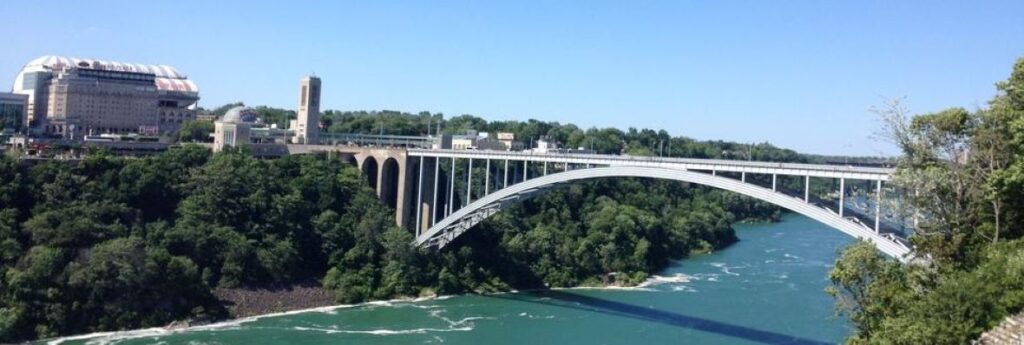Circle Monday, Nov. 8 – that’s when the US will resume welcoming fully vaccinated Canadian (and Mexican) visitors back across its land borders for non-essential travel. And in a double dose of good news, nearly four million Canadians who received doses of two different COVID-19 vaccines will qualify as fully vaccinated.
The announcements late Friday capped a whirlwind week of developments signalling the imminent end of 19 months of pandemic-induced North American travel restrictions.
First came the date, which was initially declared to be sometime in “early November” when the White House announced the gradual easing of North American travel restrictions on Thursday. Then the US Centers for Disease Control removed another mystery when it declared that people with “any combination” of two doses of a vaccine approved by either the US Food and Drug Administration or the World Health Organization “are considered fully vaccinated.”
“While CDC has not recommended mixing types of vaccine in a primary series, we recognize that this is increasingly common in other countries so should be accepted for the interpretation of vaccine records,” officials said.
The news also confirmed what the White House acknowledged earlier Friday would be a likely development: that the Oxford-AstraZeneca vaccine, approved by the WHO but not the FDA, would be deemed acceptable.
The CDC had already given the green light to overseas travellers who received the AstraZeneca vaccine, but until Friday had not expressly confirmed the same policy for those crossing into the US by land by land.
Earlier in the day, White House officials said the new rules would go into effect Monday, Nov. 8, both at the land borders and for people arriving from a number of overseas countries where travel to the US has been banned since March 2020.
The US won’t ask its forthcoming visitors to submit to a COVID-19 test prior to departure, unlike Canada, which requires travellers to show proof of a recent negative test – a costly condition of entry that runs about $200 a pop.
New York congressman Brian Higgins, who has been relentlessly campaigning against the travel restrictions for months, is urging the federal government in Ottawa to reconsider that rule. “I think that the US decision to allow Canadians coming into the United States without a test again underscores the potency of the vaccine,” Higgins said, adding, “I would like to see that reciprocated by our Canadian neighbours.”
However, public health officials in Canada made it clear Friday that test requirements are not going away any time soon.
“We’re in a situation in Canada where our health systems are still very fragile,” said Dr. Theresa Tam, Canada’s chief public health officer. “We need to still be very vigilant and careful at this point, but we will have ongoing discussions with the CDC and the United States to see what is reasonable in the trajectory going forward.”
Since Canada eased its own travel restrictions, a small percentage of fully vaccinated visitors, about 0.2%, have tested positive for the virus, added deputy chief Dr. Howard Njoo.
“The question that ensues is, is that good or bad,” Njoo said. “It’s less than 1%, but if you look at the volumes of people increasing coming to Canada as a percentage, the actual true number of people coming would obviously potentially be increasing as well.”
As if to drive home the point, the Canada Border Services Agency issued a statement for a second straight day on Friday reminding travellers (including returning Canadians) that the need for a molecular test for COVID-19, taken less than 72 hours before reaching the border, remains in place for those seeking to enter Canada.
The agency also requires travellers to use the ArriveCAN app or online portal to upload their personal details and proof of vaccination status prior to travelling.
Eligible Canadian residents taking a short trip to the US of less than 72 hours can get their test done before they leave Canada and use the results to re-enter the country.
The White House has never explained publicly why it waited three months after Canada began relaxing its restrictions. Speculation focused on a desire to open both land borders at the same time, something a burgeoning immigration crisis at the US-Mexico border made politically difficult.
“Canada shouldn’t have had to wait for Mexico,” said Maryscott Greenwood, CEO of the D.C.-based Canadian American Business Council. “The science, the politics, the policy, the reality – none of that would lead you to say, ‘Let’s do these things in tandem.’ What would be better to do in tandem is Canada and the US work in tandem across our common border, and Mexico and the US work in tandem across that border. That makes some sense.”
Higgins agreed, noting that the US is letting vaccinated travellers in Mexico enter the country even though only 38.5% of that country’s population is fully vaccinated.
“This whole argument that, ‘We have to wait until we achieve a higher rate of vaccination,’ is thrown out the window,” he said.
Deputy Prime Minister Chrystia Freeland demurred Thursday when asked whether, in the future, Canada would press its case for the US to use separate and distinct policy approaches to its northern and southern borders.
“I think that we need to be respectful of every other country’s sovereign decisions around its borders, and of every other country’s sovereign right to manage its borders as it sees fit,” Freeland said.
“Having said that, I think it’s also worth pointing out that Canada has a very effective, very close partnership with the United States, as we should.”
The two countries share the world’s longest un-militarized border, and comprise each other’s most vital trading partners, she added, with the Canadian market for US goods exceeding that of China, Japan and the United Kingdom combined.
“That means that our relationship with the US and the US relationship with Canada is important to both sides, and that bilateral conversation is really critical.”

